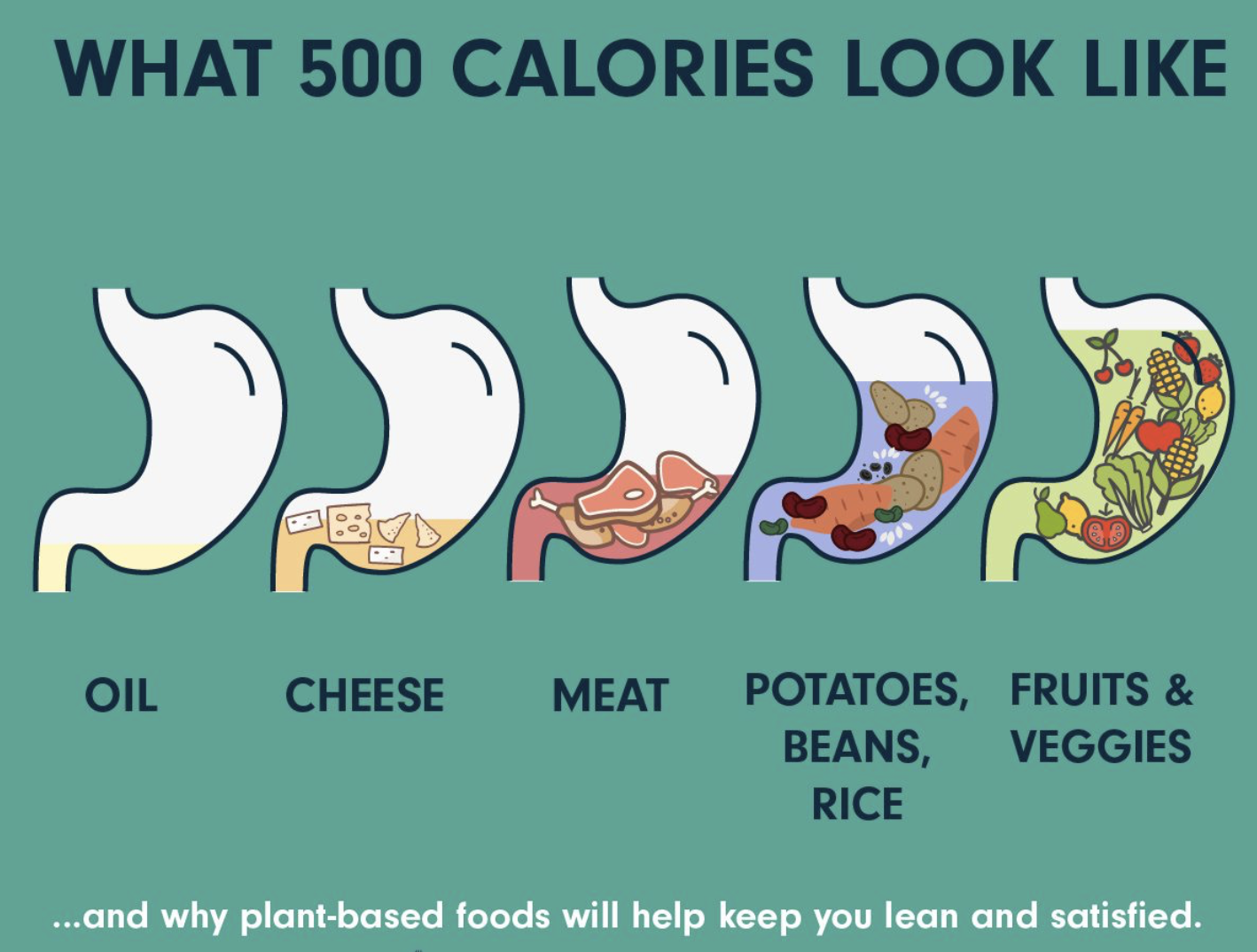Calorie Density
The secret to maintaining a healthy weight without dieting,
calorie counting, restriction, or extreme exercise
is to center your diet around foods with
High Nutrient Density and Low Calorie Density.
Each food has a certain number of calories per pound.
Foods with High Calorie Density have many calories for a small amount of food.
(Think of a candy bar which you can eat in minutes and which typically has hundreds of calories.)Foods with Low Calorie Density have few calories for a large amount of food.
(Think of a large container of spinach, which typically weighs a pound and which has 104 calories for the entire package.)
As humans, we all eat approximately three to five pounds of food daily, with four pounds being the optimal number for most average adults. This volume of food tells the stretch receptors in our stomachs that we have consumed an adequate quantity. When consume less than this, we feel hungry, deprived, and unsatisfied.
For most us, in order to eat an adequate volume of food
and still achieve a healthy weight,
the bulk of our diet needs to be comprised of foods
with low calorie density.
When we eat foods with lower calorie density, we can eat larger volumes for fewer calories. This allows us to feel full and satisfied while keeping our overall caloric intake in a healthy range. For optimal weight loss and healthy weight maintenance, the bulk of our daily diets should be compromised of foods shown in green in the chart above.
Ideally, half of our plates should be filled with non-starchy veggies and the other with plant-based protein (like tofu and legumes), whole grains, and starches (like potatoes, sweet potatoes, and whole grain pasta). Other nutrient-rich foods like nuts, seeds, avocado, and olives should be eaten in moderation, mostly as condiments or as a replacement for oil in sauces and dressings. If weight loss and health are your goals, animal products, refined sugar, and oil should be eaten only very occasionally.
Whole plant foods are naturally high in vitamins, minerals, antioxidants, prebiotics, and plant fiber. This promotes optimal health and ensures microbiome richness and diversity.
Filling our plates primarily with foods that are 600 calories or less per pound ensures that our diets are high in nutrients while being low in calories, reducing risk for all our major lifestyle diseases, and stabilizing weight without dieting or deprivation.
Wishing you abundant good health and successful weight maintenance.
🌱💕



